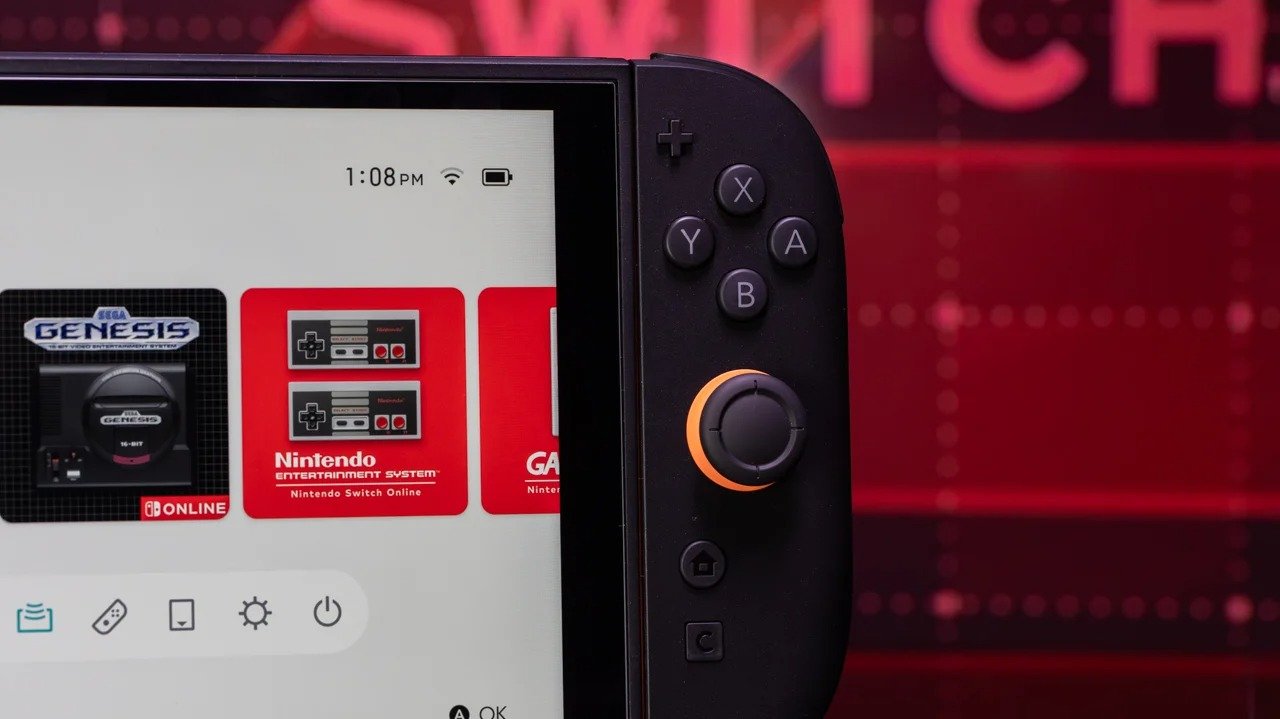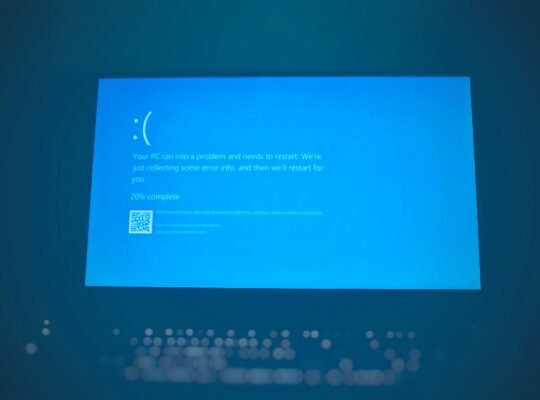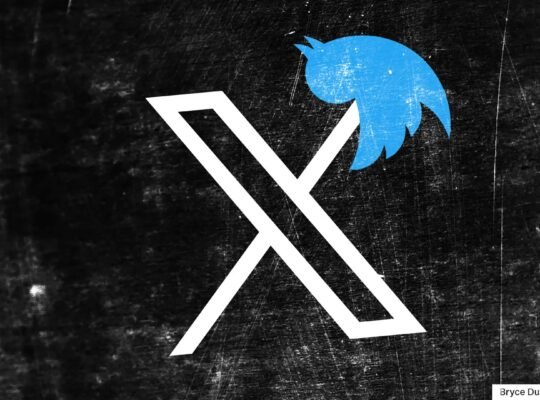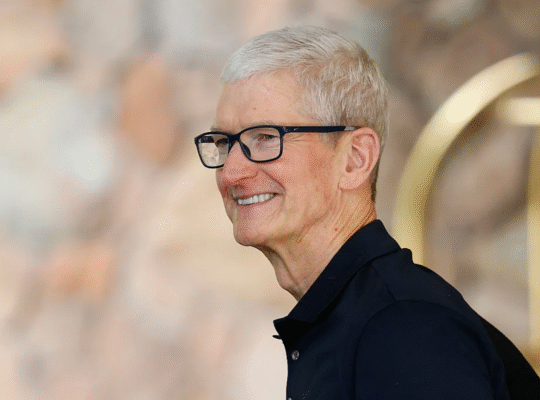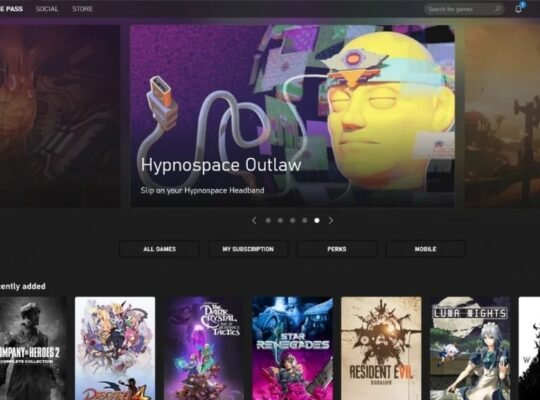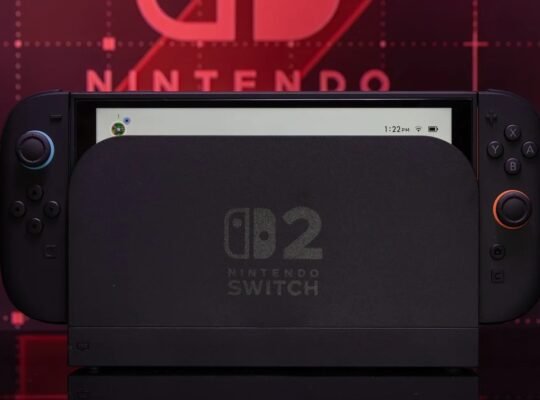Pros & Cons
- Far more powerful than the original Switch
- 4K60 video output to TV
- Big 1080p120 screen
- Joy-Con 2 controllers function as mice
- Nearly complete backward compatibility
- Unimpressive battery life
- No 4K120 or VRR with TV
- Not quite as vivid as the OLED Switch
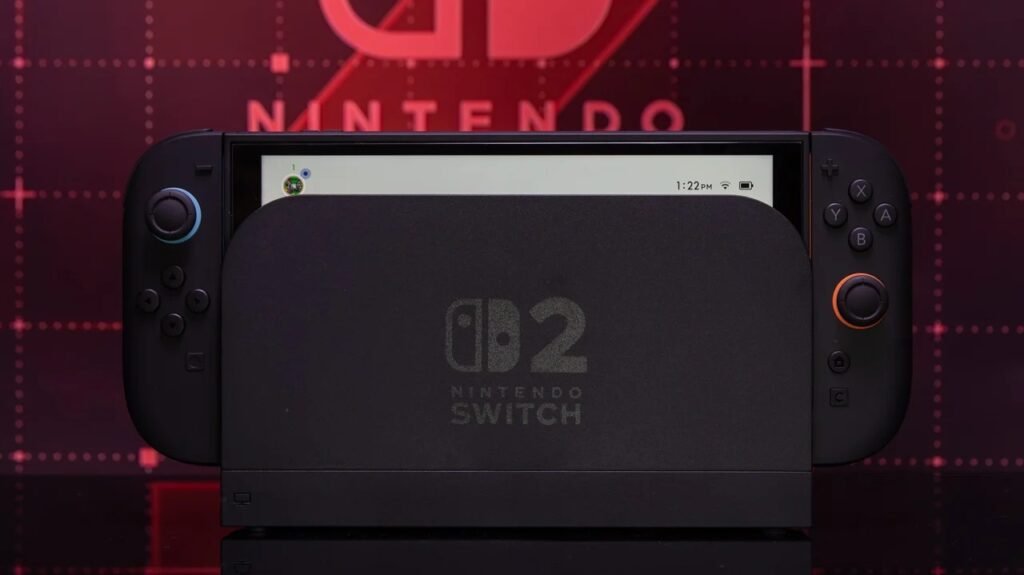
Nintendo Switch 2: Evolution Over Revolution—And That’s a Good Thing
The Nintendo Switch 2 is the long-awaited upgrade to the beloved hybrid system we’ve relied on for over eight years. While it doesn’t reinvent the console-handheld formula, it brings significant enhancements where they matter most:
- A larger 7.9-inch display with sharper visuals
- 4K output in docked mode and 120Hz refresh rate in handheld
- Innovative Joy-Con 2 controllers that double as precision mouse-like input devices
Priced at $449.99, the Switch 2 does carry a premium. Some compromises exist—like slightly reduced visual fidelity when docked to a 4K TV and a battery life that trails behind the OLED model. Still, these trade-offs barely diminish the overall experience.
Thanks to full backward compatibility with Switch 1 games and a launch lineup that includes titles like Mario Kart World, the Switch 2 feels familiar, yet undeniably modern. It refines nearly every element of its predecessor, making it a standout in the hybrid gaming console category—and deserving of an Editors’ Choice designation.
Design Upgrades: Bigger Screen, Smarter Kickstand, and Dual USB-C Ports
The Nintendo Switch 2 maintains the sleek, minimalist tablet form of its predecessors, but brings several smart design improvements to the table. At 4.4 x 7.9 x 0.5 inches (HWD), it’s slightly larger than the original Switch and 0.4 inches taller, creating room for a much more immersive 7.9-inch display. While it’s heavier—18.9 ounces vs. 14.9 ounces on the OLED model—the additional weight is hardly noticeable in everyday use.
Display: A Full Inch More, With Full HD Resolution
The new 1080p LCD screen offers:
- 1920 x 1080 resolution (up from 1280 x 720)
- A diagonal increase of nearly 1 inch over the OLED’s 7-inch display
- Clearer text, finer detail, and better UI legibility
While it doesn’t match the OLED Switch in color saturation and black depth, the Switch 2’s LCD panel delivers excellent brightness and color vibrancy, making it a win for clarity and screen real estate. It’s a major upgrade over the first-gen Switch’s LCD and a worthy competitor to the OLED variant for most users.
Ports and Practicality: Dual USB-C for Smarter Docking
Nintendo addresses a long-standing usability gripe with the addition of a second USB-C port.
- Bottom USB-C: Charging, dock connection, accessory support
- Top USB-C: Ideal for charging while using the kickstand
Other ports include:
- Power button, volume rocker
- Game card slot with protective cover
- 3.5mm headphone jack
- microSD Express slot hidden behind the kickstand
These tweaks make charging, docking, and handheld use more flexible than ever.
Kickstand: Now Adjustable and Durable
The thin plastic flap on older Switch models has been replaced with a full-width metal U-frame kickstand on sturdy hinges. This upgrade allows the Switch 2 to:
- Stand securely at nearly any angle
- Fold flat against the back when not in use
- Maintain on-the-go usability without needing an external stand
Dock Redesign: Friendly Aesthetic, Familiar Function
The Switch 2’s updated dock borrows functionality from the OLED Switch dock but improves aesthetics:
- Rounded corners for a softer, more modern look
- Power indicator when the console is inserted
- Output via HDMI, power via USB-C, and support for wired Ethernet
- Two USB-A ports for accessories like controllers, keyboards, or adapters
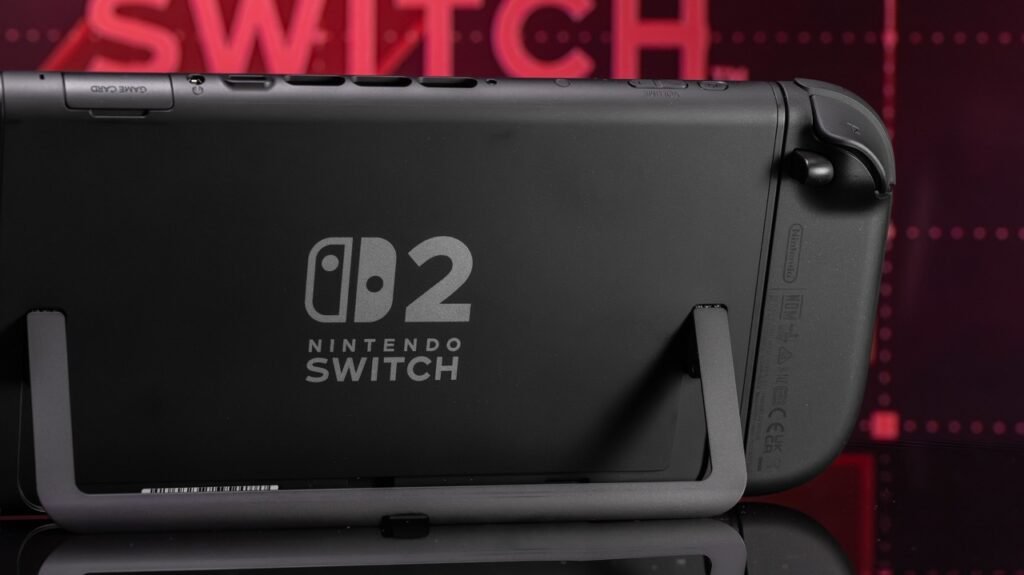
Hardware Upgrades: Nintendo Switch 2 Embraces 4K and Faster Frame Rates
For the first time in Nintendo’s console history, the Switch 2 enters the 4K gaming arena, thanks to a custom Nvidia processor designed specifically for high-performance hybrid gameplay. It brings support for:
- 4K resolution (TV output only)
- 120Hz refresh rate (select resolutions)
- Variable Refresh Rate (VRR) on handheld display
- High Dynamic Range (HDR) on both internal and external displays
However, these features are not all active simultaneously. The Switch 2 allows users to prioritize resolution, frame rate, or color fidelity, depending on how and where they play.
4K Gaming — With Limits
While 4K60fps is supported on TVs, players can opt for 1440p120Hz or 1080p120Hz for smoother motion. VRR, which eliminates screen tearing and judder, is limited to the built-in display—not available over HDMI to external TVs. This limits the adaptive frame synchronization feature to handheld play.
HDR Performance Caveat
HDR works well in handheld mode, delivering rich color gradients and enhanced contrast. But some TV setups, like the Hisense 65U8H, may experience washed-out visuals via HDR signal output. Disabling HDR in those cases may actually result in brighter, more natural TV images.
Storage, Connectivity & Expansion: Future-Proofing the Switch
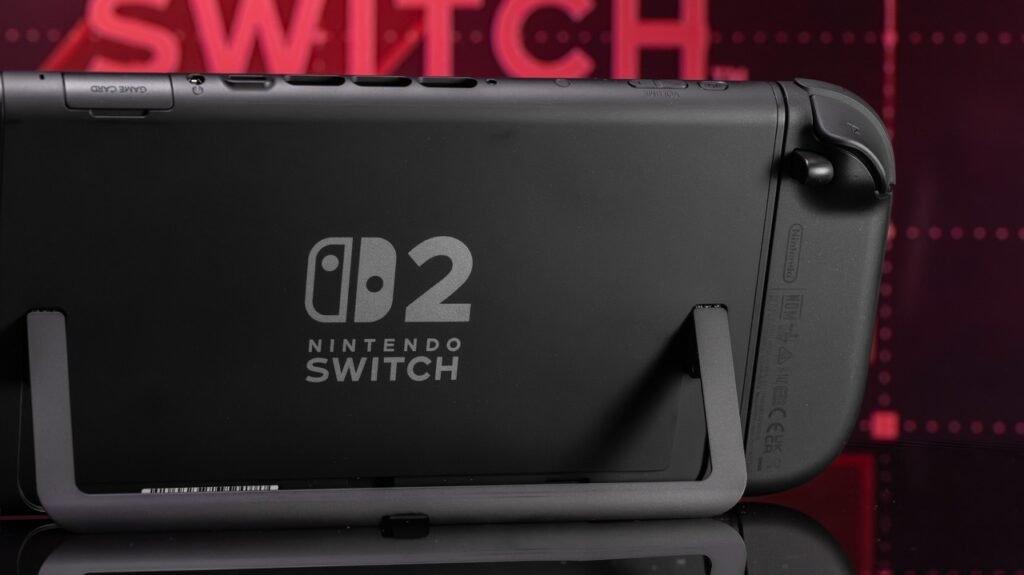
Nintendo finally addresses long-standing user pain points with improved internal hardware specs:
- 256GB internal storage (up from 64GB on OLED Switch)
- microSD Express card support (up to 2TB)
- Wi-Fi 6 (802.11ax) for faster downloads and reduced latency
- Bluetooth connectivity for wireless headsets, controllers, and accessories
Battery Life: Power Trade-Offs
The Switch 2’s enhanced performance comes at a significant cost to battery life:
- 2 to 6.5 hours on a single charge, depending on game demands
- Tested titles like Mario Kart World lasted under 4 hours
- OLED and revised LCD Switch models reach 4.5 to 9 hours
- Steam Deck OLED outperforms with 3 to 12 hours under varied loads
For portable gamers, this makes battery management essential. Keep a power bank handy for longer trips or marathon sessions.
Controls: Joy-Con 2 Adds Comfort and Functionality
The Joy-Con 2 controllers retain the minimalist, modular look of the originals—but feature smart refinements:
- Slightly taller build for improved grip
- Enhanced rail buttons (SL/SR) are now easier to press without snap-on grips
- C Button on the right Joy-Con enables GameChat voice feature (more on that later)
The familiar layout remains:
- Analog stick, 4 face buttons, home/capture, shoulder triggers
- Each Joy-Con still functions independently for split-screen or co-op modes
Joy-Con 2: Smarter Connection, Familiar Flexibility
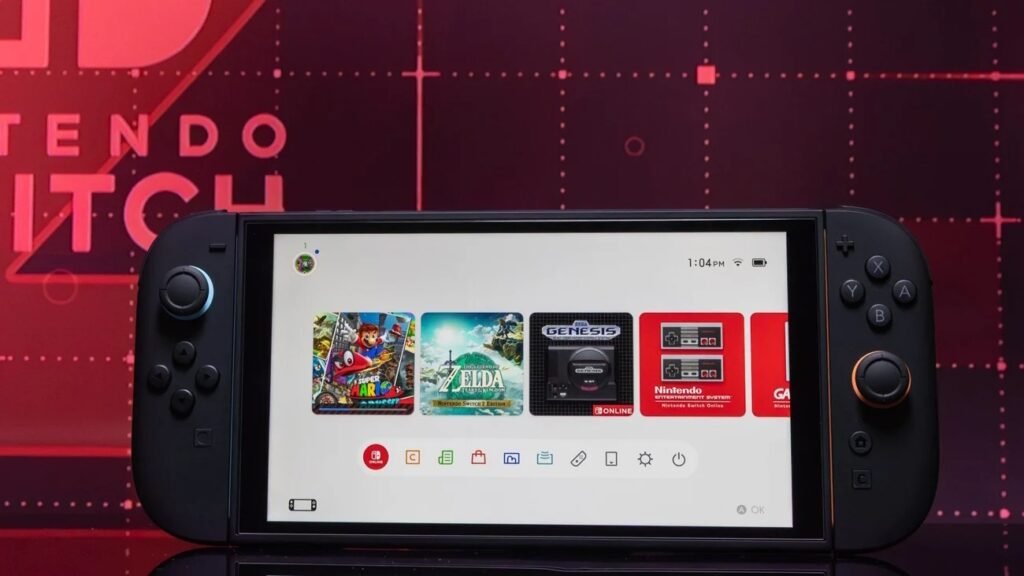
The Joy-Con 2 controllers introduce subtle but meaningful upgrades in how they connect and function—making gameplay more secure, ergonomic, and modular. Unlike the original Switch Joy-Cons that required a vertical rail slide, the Joy-Con 2s use a new press-in locking mechanism.
- Connection method: Direct alignment + magnetic assist
- Feedback: Soft, tactile click (less jarring than the Switch 1’s snap)
- Security: Physical latch ensures no wobble or looseness
These changes make attaching/detaching Joy-Cons to both the console and accessories faster and firmer, improving the feel of both handheld and grip-based play.
Dual Modes: Classic Grip and Motion Freedom
As with previous Switch generations, the Switch 2 includes two key controller accessories:
- Double Grip Shell – Combines both Joy-Con 2s into a traditional gamepad-like controller
- Wrist Straps – Allow individual use for motion control games like Just Dance or ARMS, and offer safety during energetic sessions
The wireless pairing of Joy-Con 2s remains seamless, and they’re versatile enough for:
- Dual-analog gameplay with full control schemes
- Sideways single Joy-Con mode for quick multiplayer
The Directional Compromise: Still Not Ideal for 2D Gaming
Using a single Joy-Con in horizontal mode continues to be the weakest control configuration. The symmetrical design requires:
- Four face buttons on each Joy-Con
- No D-pad, just button-based directional input
This compromises accuracy in genres that demand precise directional control—such as:
- 2D platformers
- Fighting games
- Retro-style arcade titles
While this setup mirrors the original Switch, it still doesn’t provide the tactile feedback or directional sensitivity that a proper D-pad offers.

